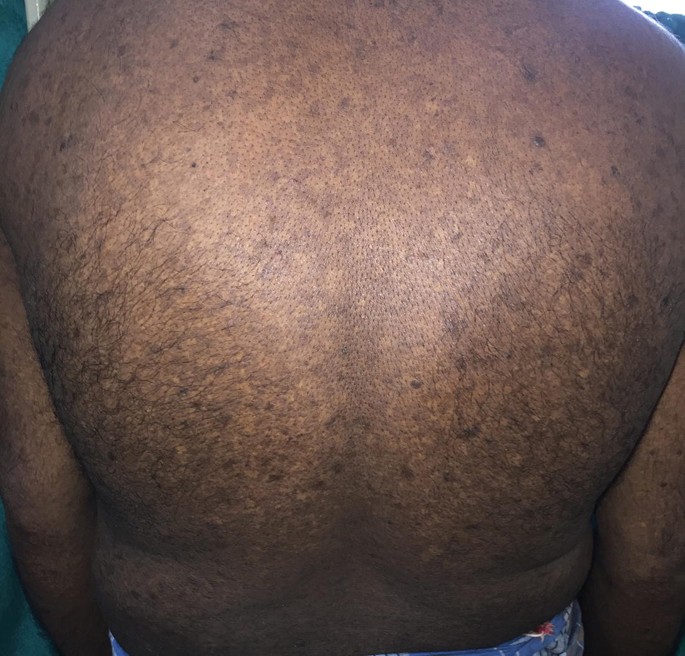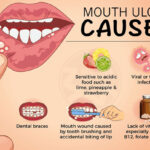Mottle hyperpigmentation, characterized by irregular patches of dark skin, is a common skin condition that affects people of various skin tones. It presents itself as uneven discoloration, often appearing as blotchy or patchy spots on the face or body. While mottle hyperpigmentation itself is not harmful, it can cause distress and affect one’s self-esteem, leading many to seek effective treatments for managing and improving their skin appearance.

This article provides an in-depth guide to understanding mottle hyperpigmentation, its causes, the factors that contribute to it, available treatments, and strategies for prevention. Whether you’re dealing with facial discoloration, melasma, or sun spots, understanding the condition can help you manage it more effectively.
What is Mottle Hyperpigmentation?
Mottle hyperpigmentation refers to irregular skin discoloration or dark spots that appear in a patchy, uneven pattern across the skin’s surface. These areas are typically darker than the surrounding skin, resulting from an overproduction of melanin. Melanin is the pigment responsible for giving skin its color, and when its production is triggered unevenly, it can cause areas of the skin to darken, forming mottled or patchy pigmentation.
Types of Mottle Hyperpigmentation
Hyperpigmentation can occur in various forms, depending on the underlying causes. The primary types of mottle hyperpigmentation include:
- Sunspots (Age Spots): These are commonly caused by prolonged exposure to UV radiation and are often seen on areas of the skin that receive the most sun exposure, such as the face, hands, and shoulders.
- Melasma: Melasma is a type of hyperpigmentation often associated with hormonal changes, such as those experienced during pregnancy or with the use of birth control. It typically appears as dark, uneven patches on the face.
- Post-Inflammatory Hyperpigmentation (PIH): This type of hyperpigmentation occurs as a result of skin injuries or conditions like acne, where the skin darkens after the injury heals.
Causes of Mottle Hyperpigmentation
Mottle hyperpigmentation occurs due to an overproduction of melanin in specific areas of the skin. Several factors can trigger this process, leading to the development of uneven skin pigmentation.
1. Excessive Sun Exposure
Ultraviolet (UV) radiation from the sun is one of the most common causes of hyperpigmentation. Prolonged exposure to the sun without adequate protection can lead to the overproduction of melanin, which can result in the formation of dark spots or sunspots. These spots often appear in areas that are frequently exposed to the sun, such as the face, neck, chest, and hands.
2. Hormonal Changes
Hormonal fluctuations are a leading cause of mottle hyperpigmentation, particularly in women. Conditions such as pregnancy, birth control, or hormone replacement therapy (HRT) can trigger the development of melasma, also known as the “mask of pregnancy.” This condition causes dark, patchy pigmentation on the forehead, cheeks, nose, and chin, often exacerbated by sunlight exposure.
3. Post-Inflammatory Hyperpigmentation (PIH)
Post-inflammatory hyperpigmentation is a common type of hyperpigmentation that occurs following skin injuries or inflammation. Conditions like acne, eczema, psoriasis, or even minor cuts can lead to dark spots as the skin heals. PIH occurs when the skin produces an excess of melanin in response to injury or inflammation, leaving dark marks even after the condition has resolved.
4. Medications
Certain medications, including hormonal treatments, antibiotics, and some anti-seizure drugs, can make the skin more sensitive to sunlight, leading to an increased risk of developing hyperpigmentation. Additionally, some topical treatments, like retinoids, can also trigger hyperpigmentation when not used properly or when combined with sun exposure.
5. Genetics
Genetic predisposition plays a significant role in the development of hyperpigmentation. People with a family history of hyperpigmentation, such as melasma or sunspots, may be more susceptible to developing the condition themselves. Additionally, individuals with darker skin tones are at a higher risk for certain types of hyperpigmentation.
Symptoms of Mottle Hyperpigmentation
The primary symptom of mottle hyperpigmentation is the appearance of dark, irregular patches or spots on the skin. These spots can vary in size and shape and may occur on any part of the body, though they are most commonly seen on the face, hands, and chest.
Key characteristics of mottle hyperpigmentation include:
- Irregular patches of darker skin: The dark patches often appear as small, round, or irregular shapes.
- Uneven tone: The pigmentation is not uniform, leading to a blotchy or mottled appearance.
- Localized areas of pigmentation: The spots tend to concentrate in specific areas of the skin, such as sun-exposed regions.
- Progression over time: If left untreated, mottle hyperpigmentation may worsen or spread, leading to larger, more prominent dark spots.
Treatment Options for Mottle Hyperpigmentation
While mottle hyperpigmentation is not a harmful condition, many individuals seek treatment to improve the appearance of their skin. Fortunately, several effective treatments can help reduce or eliminate dark spots, even out skin tone, and prevent further pigmentation.
1. Topical Treatments
Topical treatments are often the first line of defense in treating mottle hyperpigmentation. These treatments are designed to lighten dark spots and inhibit the production of excess melanin.
- Hydroquinone: Hydroquinone is a powerful skin-lightening agent that inhibits melanin production. It is often used in prescription-strength formulations to treat hyperpigmentation.
- Retinoids: Retinoids, such as tretinoin, help accelerate cell turnover and fade dark spots by promoting the shedding of pigmented skin cells.
- Vitamin C: Vitamin C is an antioxidant that can brighten the skin and reduce the appearance of dark spots by inhibiting melanin production.
- Alpha Hydroxy Acids (AHAs): AHAs, like glycolic acid, exfoliate the skin and encourage the removal of pigmented skin cells.
- Niacinamide: Niacinamide is a form of vitamin B3 that can help reduce the appearance of pigmentation by slowing down the transfer of melanin to skin cells.
2. Chemical Peels
Chemical peels involve the application of a chemical solution to the skin that exfoliates the outer layers, promoting the regeneration of healthy skin. Regular chemical peels can help lighten dark spots and improve skin tone by removing pigmented cells.
3. Laser Treatments
Laser treatments, such as fractional laser or intense pulsed light (IPL), can effectively target and break down pigment in the skin. These treatments work by delivering targeted light energy to the skin, breaking up the excess melanin in dark spots, leading to a more even skin tone over time.
4. Sun Protection
Prevention plays a crucial role in managing mottle hyperpigmentation. Sun protection is essential to prevent the further darkening of existing spots and to protect against new spots from forming. Wearing a broad-spectrum sunscreen with an SPF of 30 or higher every day is one of the most effective ways to prevent sun-induced pigmentation. Additionally, protective clothing and avoiding prolonged sun exposure can help prevent further skin damage.
5. Dietary Adjustments
While not a primary treatment, certain foods and supplements may help promote skin health and reduce pigmentation. Foods rich in antioxidants, such as berries, green leafy vegetables, and nuts, can help protect the skin from oxidative stress and promote an even skin tone.
Preventing Mottle Hyperpigmentation
Preventing mottle hyperpigmentation primarily revolves around protecting the skin from the causes that trigger pigmentation. Key preventive measures include:
- Regular use of sunscreen: Protect your skin daily with sunscreen to prevent sunspots and melasma.
- Avoiding direct sunlight: Limit your exposure to the sun, especially during peak hours, typically between 10 a.m. and 4 p.m.
- Skin hydration: Keeping your skin well-moisturized helps support skin health and promotes faster healing of any pigmentation.
- Healthy lifestyle: Eating a balanced diet, staying hydrated, and managing stress can all contribute to healthier skin.
Mottle hyperpigmentation, though common, can be managed effectively with the right treatment and preventive measures. By understanding its causes, recognizing the symptoms, and exploring available treatments, individuals can take proactive steps to achieve an even, clearer complexion. Whether using topical treatments, undergoing professional procedures, or taking preventive precautions, managing mottle hyperpigmentation is possible with consistent care and attention to skincare.

